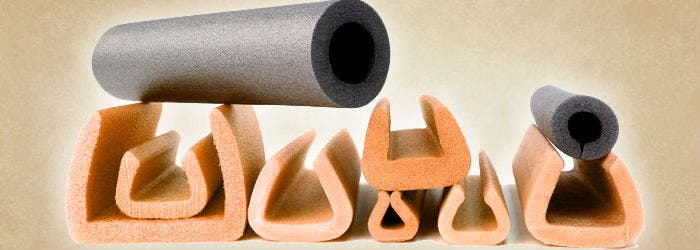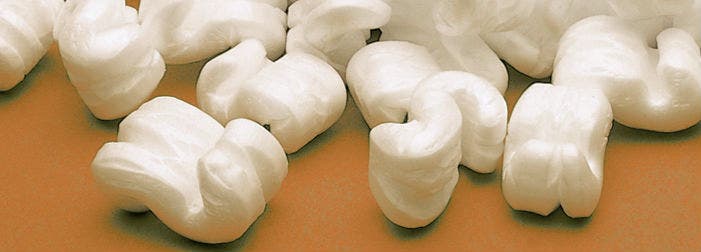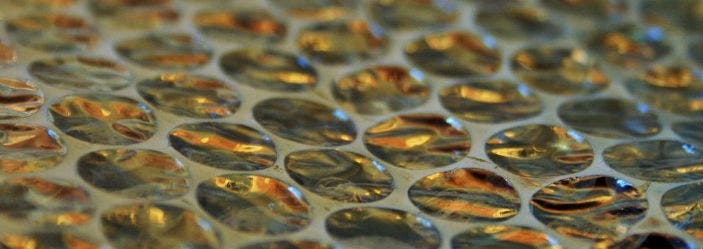Behind The Scenes of Packing Material
admin admin | Jan 17, 2019
As the saying goes, an ounce of prevention is worth a pound of cure. I am pretty sure that most of you must be gadget freak who are over-obsessed over gear, big and small belongings ranging from cameras, phones, notebooks, desktops, home theatre speakers, HDTVs and much more. But have you ever thought of the packing material that keeps your gadget safe for the long run?
With the advances in technology, packing material madness has exponentially in the past two decades. Whether it’s organic or man-made, squishy or rigid, you will come across a deliberate method to each and every type around. Now have you ever wondered why use polyurethane cushions when you have cardboard inserts? Why use those newfangled air pouches instead of traditional bubble wrap? Are packing peanuts safe? Behold! Grab a cup of tea, sit down, and read away.
Protective Foam
Popularly known as polyurethane or polyethylene, Poly foam wrap does extremely well as a hand-me-down material. Don’t ever get disheartened if you get confused over these two substances or even gotten them mixed up with other types such as Styrofoam. Why, you may ask? Because all the three materials can look, feel and even smell quite similar to one another. Nevertheless, if you already know poly you will ultimately get to know urethane, ethylene, and styrene are quite different in nature.

In 1937, that is around 100 years after Eduard Simon discovered the base material to make Styrofoam, another German scientist named Otto Bayer was considering to create a truly flexible polymer. So what he did was, he mixed liquid polyether with polyester diols and – boom! The experiment became a grand success- polyurethane was born. Unfortunately, due to the World War 2, further research wasn’t allowed and it didn’t become commercially available until the late 1950s.
The foam is cheap, flexible material that can be molded and trimmed into innumerable shapes and sizes to accommodate a wide range of packing tasks. Innumerable shapes and sizes to accommodate a wide range of packing tasks can also be thinly sliced for use a wrap, and molded or cut into form-fitting inserts, like the grey ones you see above. Being far softer than polyethylene, it can also be laminated onto other materials like pressure-sensitive adhesives. In fact, it may quite interest you to know that chances are also there that you've got polyurethane panels lining your walls for insulation, or stuffed in your car seats for padding.
Packing Peanuts
Nearly 30 years after the introduction of Styrofoam, a company called Dow Chemical came up with packing peanuts. The fateful year was 1965. Peanuts can be made from polystyrene or any other biodegradable, more eco-friendly material in vogue today. Packing peanut is a product that has a rare ability to “lose fill pack" when added to an enclosed box.

If peanuts used in bulk, they act as a self-correcting packing material that can shift and tumble to fill air gaps. This turns out to be quite an advantage if your hardware has a bunch of corners or easily damaged edges. With a unique ability to alter their aggregate arrangement and density, peanuts have full potential to take on the many shapes needed to fill loose spaces.
Several packing companies are loving it. Jason Archambault from Fastpack says They're meant to fill all the nooks and crannies. If you really pack them tight enough, they should have no problem holding your product in place, though I'd still wrap the product in a couple of sheets of bubble wrap to be safe.
Peanuts are edible- many modern packing peanuts are made of cornstarch, which is biodegradable and eco-friendly. Moreover, they are made from cornstarch, which means have no electrostatic charge, making them a great alternative for safe-guarding electronics in transit. Perhaps these products are pretty non-toxic, so pet owners' it's time to get rid of the fear of poisoning their beloved pooches.
Air Protection
When it comes to the air based protection, bubble wraps is the only thing that comes to my mind. The story begins in 1951 when two engineers named Alfred Fielding and Marc Chavannes, bonded together two plastic shower curtains in a zany attempt to develop a new type of wallpaper. Air became trapped in pockets between the sheets and thus the sealed air pockets could theoretically be used as heat traps- something like greenhouse insulation.

By the year 1960, messers Fielding and Chavannes had officially launched Sealed Air Corporation, but it wasn’t until a few years later that they found a willing evangelist for the madness they had concocted. It was the year when IBM was launching the IBM 1401, the world's first commercially manufactured business computer, and needed a way to protect all those delicate computer components while the machines were in transit. And all of a sudden, bubble wrap that fascinates us today was born.
Speaking of today’s bubble wrap, it involves complex machinery, a relatively small amount of polyethylene, and lots and lots of plastic sheets. After that, Pea-sized polyethylene pellets are fed into an extruder- a long, rotating cylinder that's heated to 204C. A layer of plastic sheet is wrapped around a rotating drum, whose surface is full of holes. With the help of a nifty suction process, the sheet is sucked into the holes - creating air pockets - and then another sheet of plastic is laid on top.
Keep reading our blog and get in touch with us for more protective packaging and packaging hacks.







